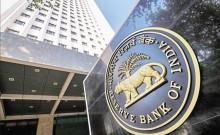
The Indian rupee stayed within a narrow range on Monday despite stable interbank dollar bids overriding positive signals from the global market's improved risk appetite. The presence of offers from state-owned banks also dampened any weakness in the local currency. At 10:00 a.m. IST, the rupee was at Rs 88.67 against the U.S. dollar, almost the same as its previous close at Rs 88.66.
Asian currencies were performing better against the dollar, and regional shares were on the rise due to optimism surrounding the potential end of the U.S. federal government shutdown. The U.S. Senate had taken a step forward on Sunday to reopen the government, leading to increased positivity in the market. MSCI's index of Asian shares excluding Japan climbed by 1%, while India's stock market benchmarks, the BSE Sensex and Nifty 50, each advanced by approximately 0.3%.

Despite the improved risk appetite globally, the rupee did not gain much momentum due to consistent local corporate dollar demand and minimal foreign portfolio inflows. Market interventions since late September have aided the rupee in staying above its all-time low of 88.80. Foreign investors have offloaded around $1.5 billion in Indian stocks this November, contributing to a total outflow of $17.4 billion for the year.
It was noted by two traders that the central bank likely intervened sporadically to bolster the rupee on Monday. Amit Pabari, managing director at FX advisory firm CR Forex, highlighted the importance of the Reserve Bank of India's defense of the Rs 88.80 level, acting as a clear threshold to prevent the USD/INR from rising further. There is seen to be solid resistance around Rs 88.80–89.00 and support near Rs 88.40 for the currency pair, according to Pabari's analysis.

















